What are the daily inspections of transformers?
1. Daily inspection of transformers:
1) The oil temperature and thermometer of the transformer should be normal, the oil level of the oil storage cabinet should correspond to the temperature, and there is no oil leakage or oil leakage in all parts.
2) The casing oil level should be normal. There are no breakage cracks, severe oil stains, discharge marks and other abnormal phenomena on the outside of the casing.
3) The transformer sound is normal.
4) The temperature of each cooler should be similar, and the fan and oil pump should be running normally.
The oil flow relay works normally.
5) The moisture absorber is intact and the adsorbent is dry.
6) There should be no signs of heat in the lead connectors, cables and busbars.
7) The pressure relief valve or safety air passage and explosion-proof membrane should be intact.
8) There should be no gas in the gas relay.
9) The control box and the secondary terminal box should be tightly closed without moisture.
2. Special inspection items of transformers:
1) New equipment or transformers that have been repaired and renovated are put into operation within 75h.
2) When there are serious defects
3) When the weather changes suddenly (such as strong wind, heavy fog, heavy snow, hail, cold wave, etc.)
4) Thunderstorm season, especially after snow and rain.
5) High temperature season and peak load period.
6) When the transformer emergency load is running.
2. External inspection items of dry-type transformers:
(1) Check whether the outer layer of the bushing and winding resin insulation of the transformer is clean, and whether there are creeping marks and carbonization;
(2) The high and low voltage bushing leads of the transformer are tightly grounded without heat, and there is no crack and discharge phenomenon;
(3) Check the fasteners, connectors, conductive parts and other parts for signs of rust, corrosion, and whether the conductive parts are in good contact;
(4) Check the cable and bus for abnormalities;
(5) Check whether the electrical equipment in the temperature box of the air cooling system is operating normally and whether the signal system is abnormal;
(6) Listen carefully to the sound of the transformer outside the fence to determine whether there is any abnormality and whether the operation is normal;
(7) Check whether the grounding of the transformer base, railing, transformer room cable grounding wire, etc. is reliable and good;
(8) Check whether the temperature of the contactor part and the case exceeds the standard with a temperature checker.
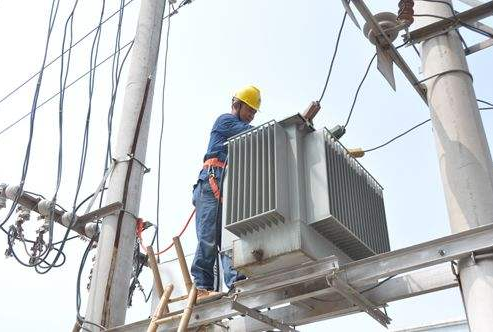
3. Abnormal operation and fault handling of transformer
1) Abnormal state of transformer
(1) Serious oil leakage;
(2) The oil level cannot be seen in the oil pillow or the oil level is too low;
(3) Carbonization of transformer oil;
(4) The oil level rises abnormally;
(5) Abnormal sound inside the transformer;
(6) Abnormal discharge sound and spark phenomenon in porcelain parts;
(7) The transformer bushing is cracked or severely damaged;
(8) The high and low voltage bushing lead wire clamp of the transformer is overheated;
(9) Cooling device failure;
(10) The gas in the gas relay keeps gathering and the continuous action signals;
(11) Under normal load and cooling conditions, the oil temperature rises abnormally.
2)Exceptions and handling during operation.
phenomenon:
(1) The sound of the transformer is obviously increased, very abnormal, and there is a cracking sound inside.
(2) The casing has severe damage and discharge.
(3) The transformer smokes and catches fire.
Treatment: When the above situation occurs, the duty personnel should immediately shut down the transformer.
3)Treatment when the oil temperature exceeds the stipulation
(1) Check the temperature of transformer load and cooling medium, and check with the normal temperature under the same load and cooling medium temperature.
(2) Check the temperature measurement device.
(3) Check the transformer cooling device.
(4) If the temperature rise is due to the failure of the cooling system and it cannot be repaired during operation, the transformer should be shut down for repair; if it cannot be shut down for repair immediately, the on-duty personnel should adjust the load of the transformer according to the provisions of the site regulations To the corresponding capacity at the allowable temperature.
(5) Under normal load and cooling conditions, the temperature of the transformer is abnormal and continues to rise, and after the inspection proves that the temperature indication is correct, it is considered that the transformer has internally failed, and the transformer should be shut down immediately.
(6) The transformer operates in various over-rated current modes. If the oil temperature of the top layer exceeds 105 ° C, the load should be reduced immediately.
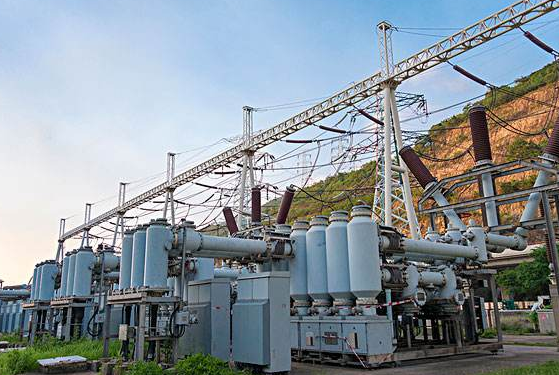
4. Transformer accident handling
(1). Treatment of transformer automatic trip
In order to ensure the safe operation and convenient operation of the transformer, the high, medium and low voltage sides of the transformer are equipped with circuit breakers and necessary relay protection devices. When the high-voltage side or high, medium and low voltage side of the circuit breaker of the transformer is tripped, the operator should take the following measures:
1) If there is a spare transformer, it should be put in immediately to restore the power supply to the user, and then the cause of the trip of the faulty transformer is found.
2) If there is no backup transformer, the load should be transferred as soon as possible, the operation mode should be changed, and at the same time, what protective action should be found out. When checking the cause of transformer tripping, it should be ascertained whether there are obvious abnormalities in the transformer, whether there are external short circuits, line failures, overloads, obvious flames, strange noises, oil injection, etc. If it is proved that the tripping of the circuit breaker on each side of the transformer is not caused by internal faults, but due to overload, external short circuit or misoperation of the secondary circuit of the protection device, the transformer may be put into operation again without internal inspection. If it is impossible to confirm that the transformer trip is caused by the above external reasons, the transformer should be analyzed for accidents, such as comparison analysis with previous data through electrical tests, oil analysis, etc. If it can be judged by the above inspection and analysis that there is no fault inside the transformer, the gas relay of the protection system should be re-launched to the trip position, and the transformer should be re-launched. If the internal fault of the transformer is determined by the inspection, the hanging shell of the transformer needs to be inspected until the fault is detected and dealt with.
(2). Treatment after transformer gas protection action
1) Handling after light gas action. After the light gas action, reset the acoustic signal, check the signal relay, and distinguish whether the light gas action of the transformer body or the light gas action of the on-load voltage regulation switch. Don’t rush to restore the relay off the card, and then check whether the oil level of the transformer body or the oil pillow of the on-load voltage regulating switch is normal and how much the gas is filled in the gas relay to determine the cause of the action. After the cause of the action is identified, the reset signal relay drops the card and the optical character card. At this time, gas should be collected as soon as possible to analyze the cause.
The newly installed or overhauled transformer brings air into the transformer when it is refueled and filtered, and it cannot be discharged in time. When the transformer is running, the oil temperature gradually rises, forming a convection of the oil, and the air stored inside is gradually discharged to make the gas relay operate. . The number of times the gas relay operates depends on how much gas is stored inside the transformer. In this case, a comprehensive analysis should be made based on the sound, temperature, oil level of the transformer, oiling, and oil filtering.
① The action cause of non-transformer failure, such as the accumulation of more air in the oil in the gas relay, the wrong connection of the gas relay protection circuit, the short circuit of the secondary cable of the terminal block, etc. caused the light gas to malfunction.
②When the light gas is operated frequently, you should monitor and record every time, pay attention to the gas characteristics. If the oil and gas analysis judges that it is air, it should be continuously deflated, and care should be taken not to accidentally touch the trip test probe of the gas relay.
③If it is not possible to determine the cause of the action as a non-transformer failure or external cause, and no other abnormalities are found, the gas protection should be put into the trip circuit, and the monitoring of the transformer should be strengthened to carefully observe its development and changes.
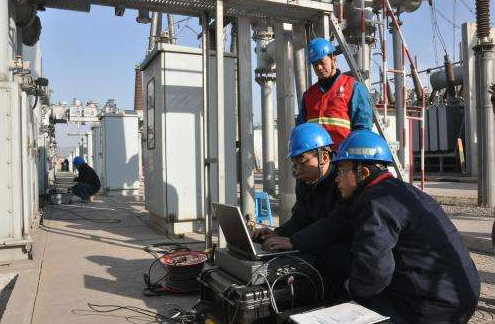
2) Treatment after heavy gas protection action. When the gas protection action trip of the transformer in operation occurs, or the light gas signal and gas trip appear at the same time, first of all, it should be thought that the transformer may have an internal failure, and such disposal of the transformer should be cautious. The gas generated in the faulty transformer is caused by different parts of the transformer, different forms of overheating and even metal short circuit and discharge. Therefore, identifying the nature of the gas in the gas relay, the amount of gas accumulation, and the accumulation speed are crucial to determine the nature and severity of the transformer fault.
Generally speaking, the accumulating gas is non-flammable, colorless and odorless, and the chromatographic analysis judges that it is air, then the transformer can continue to operate. If the gas is flammable, the cause of the failure should be further analyzed. The main means is to perform oil analysis (including the most common and effective chromatographic three ratio analysis), electrical test analysis, and hanging shell inspection in accordance with relevant regulations and guidelines Inspection and analysis.
If the cause is not analyzed for a while, the transformer is not allowed to be put into operation before being inspected and tested, so as not to cause failure or accidents to expand. In particular, it should be noted that faults in the tap changer (no load and on load) and coil insulation are the focus of analysis. It should be emphasized that the transformer gas protection action is a harbinger of internal faults or a reflection of internal faults. Therefore, the forcible delivery, trial delivery and supervised operation of this type of transformers should be carried out with special care, and forcible delivery should not be carried out until the cause of the accident has been identified.
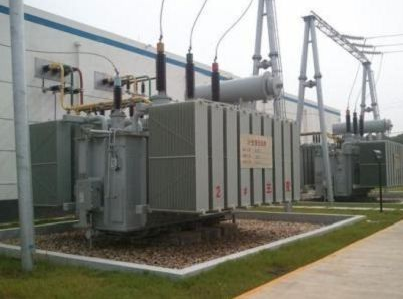
(3). Treatment after the operation of transformer differential protection
Differential protection is to reflect the electrical fault within the range of longitudinal difference (including the short circuit between the transformer and the bushing lead). Therefore, whenever the differential protection is activated, the circuit breakers on each side of the transformer will trip simultaneously. At this time, the operating personnel should take the following measures:
1) Report to the dispatching and superior supervisors, and return the accident sound and signal.
2) Pull off the isolation switches on each side of the transformer trip, and check the outside of the transformer (such as oil temperature, oil color, explosion-proof glass, insulating sleeve, etc.) for abnormal conditions. High Voltage Engineering Answering Challenge
3) Check all the primary and secondary equipment in the transformer differential protection range, that is, observe all equipment, leads, busbars, wall bushings, etc. on the high, medium and low voltage sides of the transformer for abnormalities and short circuit discharge phenomena, secondary protection Whether there is any abnormality in the loop, in order to find the fault point within the scope of the differential protection zone.
4) Check the transformer differential protection circuit, and observe whether the current transformer terminals used for differential protection have short-circuit discharge and breakdown, whether the secondary circuit is open circuit, whether there is any faulty touch, wrong wiring, etc.
5) Measure the insulation resistance of the transformer and check for internal insulation failures.
6) Check whether the DC system is grounded.
After the above inspection, if it is determined that the differential protection is caused by a non-internal fault (such as protection accidental collision, ride-through fault) caused by the misoperation, the transformer can be tested in the gas protection trip position. If it can not be judged as the cause of non-internal fault, the transformer should be further measured, checked and analyzed (such as test DC resistance, simplified analysis of oil or chromatographic analysis of oil) to determine the nature of the fault and the cause of differential protection action. If it is found that there are internal failure features, it must be hung or returned to the factory for inspection and treatment.
(4). Treatment after heavy gas and differential protection operate simultaneously
After heavy gas and differential protection trip at the same time, withdraw the transformer to the maintenance state, and immediately report to the dispatcher. At this time, gas should be collected as soon as possible to analyze the cause.
(5). Treatment after the current quick-break protection action
When the current quick-break protection action is tripped, the treatment process refers to the treatment of the differential protection action.
(6). Treatment after tripping over time of over-current protection action
Timed overcurrent protection is backup protection, which can be used as backup for subordinate line protection, or as backup for subordinate bus protection, or as backup for transformer main protection. Therefore, the overcurrent protection action trips should be comprehensively analyzed and judged according to its protection scope, protection signal action conditions, corresponding circuit breaker trip conditions, equipment failure conditions, etc., and then processed separately. According to statistical analysis, the most common cause of overcurrent protection action trips is the overstepped trip caused by the subordinate line fault refusal to trip; the second is the trip caused by subordinate bus equipment failure (mainly in 110kV and below substations).
When the transformer trips due to the definite time overcurrent protection action, the accident sound should be restored first, and then check whether there is a possibility of overstepping, that is, check the action of each outlet switch protection device, whether each signal relay is off the card, and each operating mechanism Are there any jams?
1) Due to the failure of the subordinate line equipment, it could not be removed in time, and the corresponding circuit breaker on the main transformer side was skipped, causing the bus to lose power.
① Check the action of each line protection signal on the power-loss bus: if there is an overstep caused by the line fault protection action circuit breaker that has not tripped, the line circuit breaker that refuses to jump should be opened and the faulty line should be removed Put the transformer back into operation, and at the same time, resume power supply to the remaining lines.
② After inspection, if the wireless circuit protection action signal may be a line fault, the overstep caused by the protection circuit breaker cannot trip due to the protection failure. Then open all the circuit breakers on the bus, put the transformer back into operation, and then try to send each circuit breaker one by one. When closing a circuit breaker and causing the main transformer to trip, the circuit breaker should be After changing to cold standby, restore the power transmission of the transformer and the remaining lines.
The above-mentioned faulty lines shall not transmit power without being identified and before being handled.
2) Due to the failure of the subordinate bus equipment, the main transformer side circuit breaker tripped and caused the bus to lose power.
llOkV and below busbars of various voltage levels of substations generally do not have separate busbar protection. Overcurrent protection also serves as busbar protection. If the equipment on the busbar fails, it will only trip by overcurrent protection action. After the action is tripped, the bus and the associated bus equipment need to be checked. If any side bus or the associated bus equipment is found to have obvious fault characteristics during the inspection, the faulty bus should be cut off and the power transmission resumed.
3) Over-current protection trips and the main transformer main protection, such as gas, also reflects the action, the main transformer body should be checked, and if there are obvious fault characteristics, power cannot be sent.
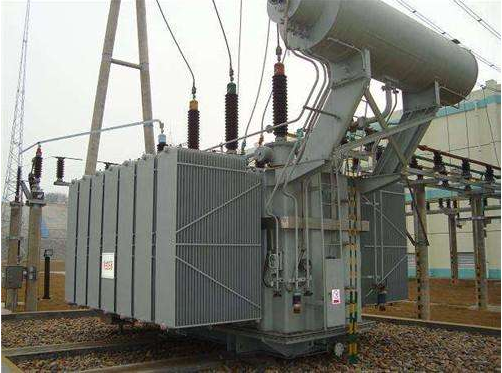
(7). Zero sequence protection action
⑴ Zero sequence protection action is generally caused by a single-phase ground fault in a three-phase system with a neutral point directly grounded. After the accident, you should immediately contact the dispatcher, report it, and wait for the handling.
⑵Three-phase voltage unbalanced zero sequence protection action
① The three-phase load is unbalanced, causing a neutral point displacement and making the three-phase voltage unbalanced;
② Ferromagnetic resonance occurs in the system, making the three-phase voltage unbalanced,
③ The inter-turn and inter-layer short-circuits occur locally in the winding, resulting in an unbalanced three-phase voltage.
(8). Transformer fire treatment
When the transformer catches fire, no matter what the reason is, you should first open the circuit breaker on each side, cut off the power supply, disable the cooling device, and quickly take effective measures to extinguish the fire. At the same time, report to the fire department, dispatch, and superior supervisors to assist in handling. If the oil is burning in the top cover of the transformer, the oil level should be lowered from the faulty oil drain valve; water the casing (be careful not to let the water shallow on the flaming oil) to cool the oil and not easy to burn. If the casing explodes, all the oil must be placed in the oil pit or oil storage tank. If the internal fault of the transformer causes a fire, the oil cannot be drained to prevent a serious explosion of the transformer. When the transformer is ignited due to fuel injection, it should be quickly covered with yellow sand to isolate, control the spread of fire, and use fire extinguishing equipment to extinguish the fire. When extinguishing transformers, it is best to use foam fire extinguishers, if necessary, use dry sand to extinguish the fire.
5、 the commissioning and decommissioning of transformers
1. Before the transformer is put into operation, the personnel on duty should carefully check to make sure that the transformer and its protective device are in good condition, have live operating conditions, and pay attention to whether there are foreign objects outside, whether the temporary ground wire has been removed, whether the tap switch position is correct, and each valve Is the closure correct? When the transformer is put into operation at low temperature, the respirator should be prevented from being blocked due to icing.
2. The standby transformer in operation should be ready for operation at any time. Those who have been out of service for a long time should charge regularly and put into the cooling device at the same time. If it is forced by a circulating transformer, when it is operated without load after charging, it should be put into some coolers in turn, the number of which does not exceed the number of operating units specified by the manufacturer under no load.
3. Operating procedures for transformer commissioning and shutdown:
(1) When the circulation transformer is put into operation, it should be put into the cooler one by one, and the number of the cooler should be controlled according to the load.
(2) The charging of the transformer should be operated on the circuit breaker of the power supply side with the protection device. When stopping, the load side should be stopped first, and then the power supply side.